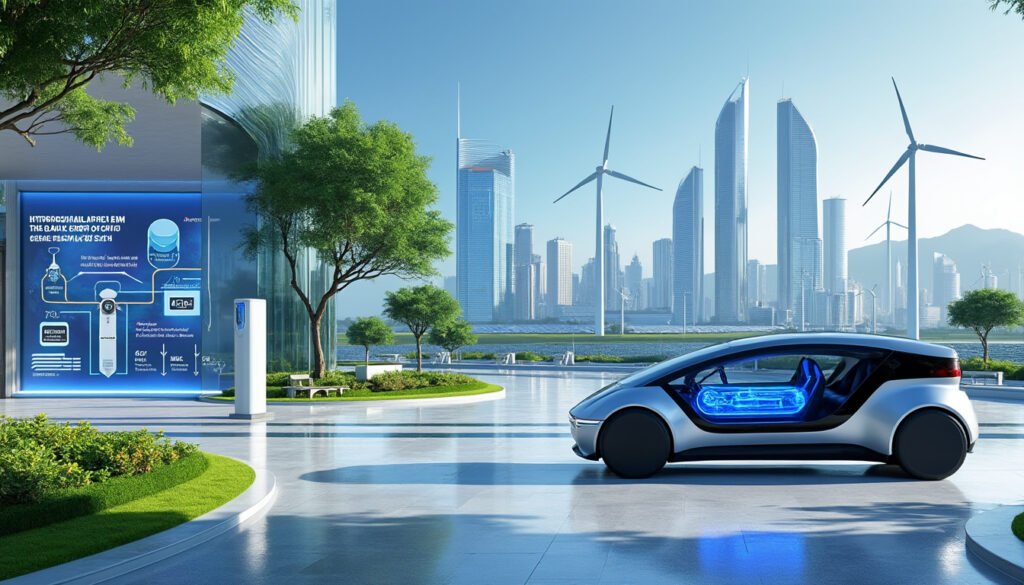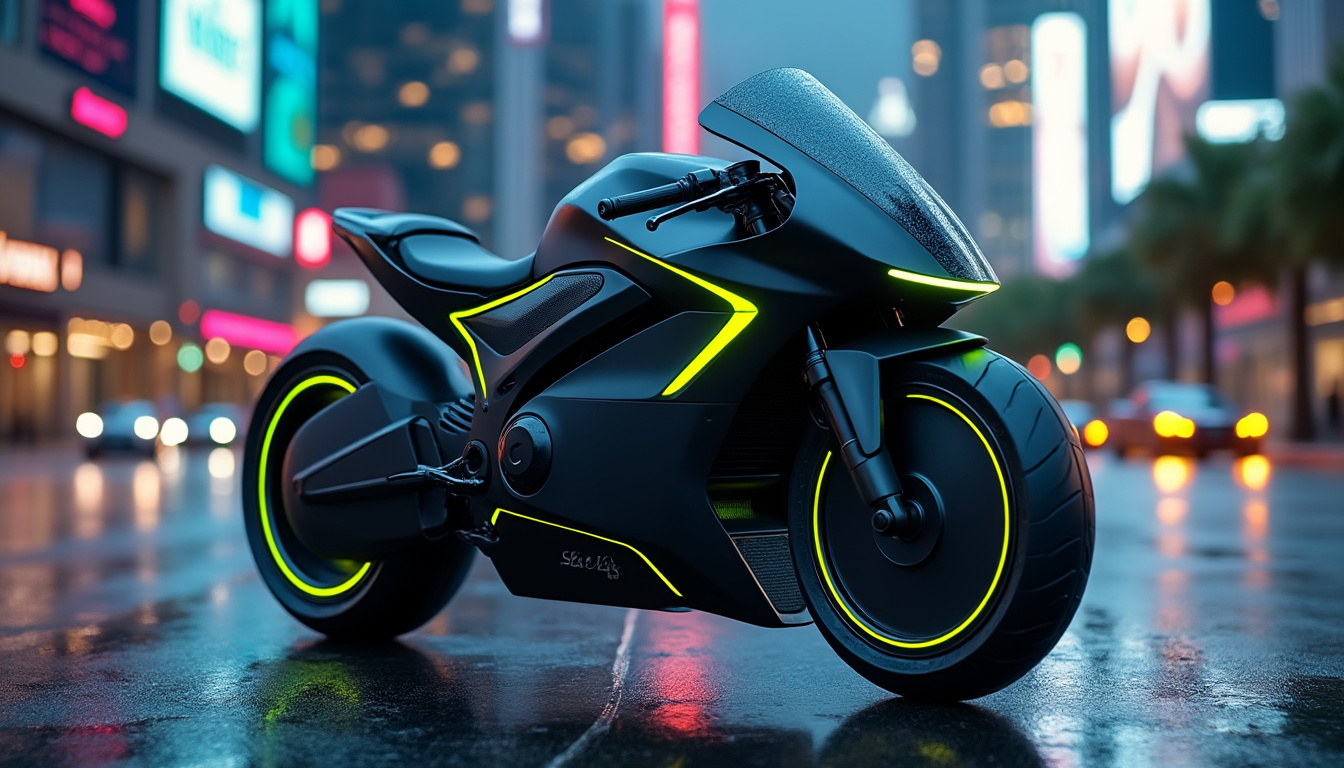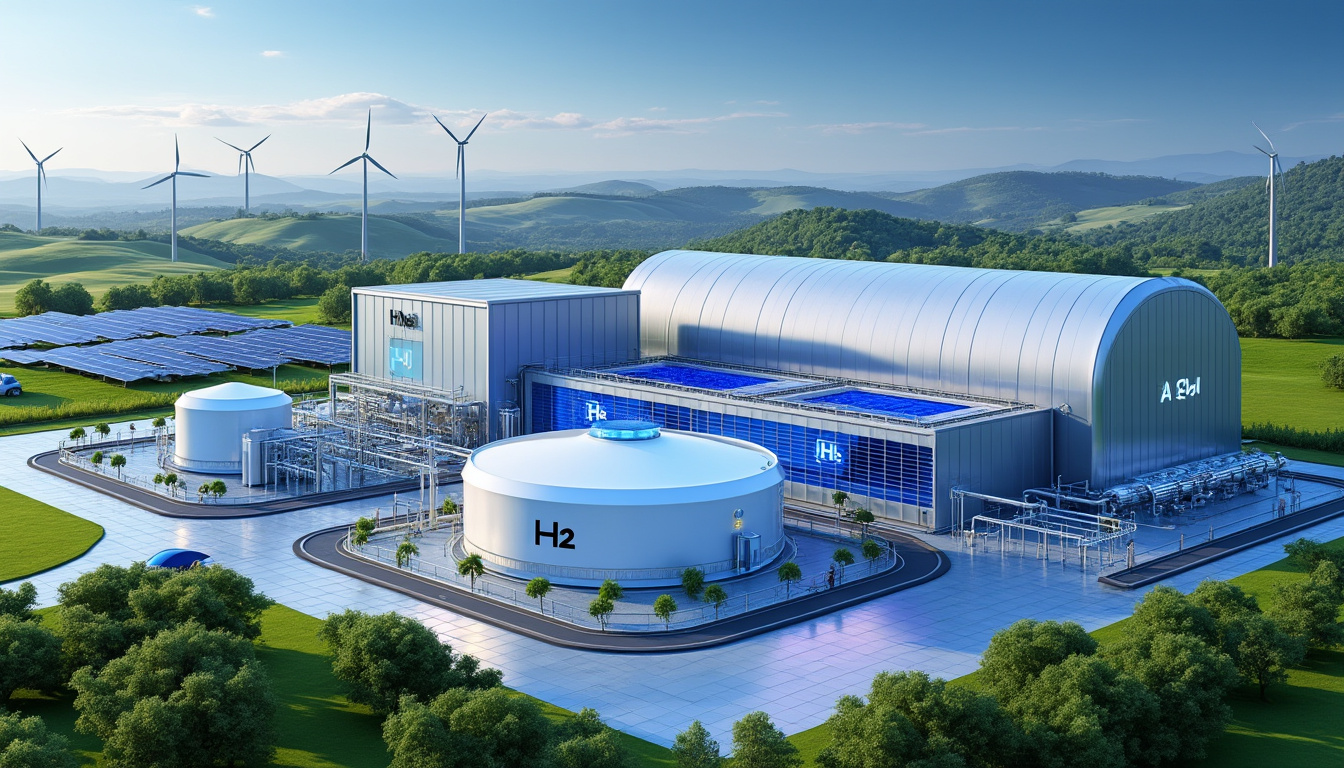China is revolutionizing hydrogen by presenting it as a strategic asset with the Segway APEX H2 and its interchangeable battery system

The world of mobility is undergoing a transformation, and China is positioning itself as a key player in this energy revolution. With significant technological advancements, notably through the Segway APEX H2, the country is redefining the future of automotive propulsion. A combination of advanced technology, hydrogen as a power source, and an interchangeable battery system, this hybrid motorcycle embodies a new era of sustainable development. In this analysis, we will examine the multiple facets of these innovations, their impact on the energy landscape, and the challenges that lie ahead on the road to zero emissions.
Revolution in the two-wheeler sector: The Segway APEX H2
The Segway APEX H2, an iconic model, perfectly illustrates the rapid evolution of the motorcycle industry in terms of electric mobility and sustainable development. Designed by Ninebot, this hybrid motorcycle combines a 60 kW electric motor with a hydrogen fuel cell for impressive and environmentally friendly performance.

Optimal performance and innovative design
With an estimated top speed of 150 km/h and an acceleration from 0 to 100 km/h in less than 4 seconds, the Segway APEX H2 is not only talked about for its futuristic design but also for its performance.
The technical features that distinguish it include:
- Lightweight frame: Made with modern materials for increased maneuverability.
- Monoshock suspension: Optimizes comfort and stability at high speeds.
- Solid wheels: Reduce aerodynamic drag to improve energy efficiency.
Its design, inspired by cyberpunk, also catches the eye. The sharp lines and aerodynamic style give this motorcycle a cutting-edge look that reflects its technological innovation.
Interchangeable battery technology: a strategic asset
One of the strengths of the Segway APEX H2 is its interchangeable battery, which allows for quick refueling similar to that of a traditional gas fill-up. This addresses one of the major issues related to hydrogen adoption: refueling infrastructure. This pragmatic approach enhances user comfort and makes the transition to this form of mobility much more appealing.
The technical details of this technology are as follows:
| Aspect | Details |
|---|---|
| Fuel type | Hydrogen in the form of an interchangeable cartridge |
| Engine performance | 60 kW (about 80 horsepower) |
| Top speed | 150 km/h |
| Acceleration | 0 to 100 km/h in less than 4 seconds |
Hydrogen and sustainability: a promise of clean energy
Hydrogen is often seen as the energy of tomorrow due to its ability to produce electricity without emitting pollutants. However, it is crucial to consider its production, which remains predominantly based on polluting processes, such as steam reforming of natural gas.

The challenges of hydrogen production
Currently, hydrogen production worldwide suffers from significant shortcomings, mainly regarding its environmental impact. Although cleaner methods, such as water electrolysis powered by renewable energy, are under development, they remain costly and require increased research and support.
The methods of hydrogen production can be classified as follows:
- Production from fossil fuels: 95% of global hydrogen is currently produced via this method, which emits significant amounts of CO2.
- Electrolysis: Producing hydrogen from water using renewable electricity, but this process remains expensive.
- Green hydrogen: An approach targeting decarbonization via sustainable methods, still rare at present.
In this context, the Segway APEX H2 stands out by promoting the use of hydrogen in a more environmentally friendly manner, thus encouraging the market towards a necessary transition.
Future perspectives and hydrogen research
Technological advancements in the field of hydrogen pave the way for a promising future where this resource can play a central role in our global energy strategy. Investments in research and development are more essential than ever to mitigate the negative impacts of its current production. Many companies, institutions, and governments are mobilizing to create a favorable environment for green hydrogen.
Description of relevant initiatives:
| Initiative | Objective |
|---|---|
| Power to Gas | Convert excess renewable energy into hydrogen |
| H2 Mobility | Develop fueling station infrastructures |
| Key Hydrogen | Invest in research on electrolysis technology |
Towards massive adoption of hydrogen mobility
The Segway APEX H2 is not just a technical advancement, it is also a challenge for the general acceptance of hydrogen as a transport solution. The motorcycle's competitive position in the market at a price of around 9,000 euros could convince environmentally conscious consumers.
Current state of the hydrogen mobility market
As hydrogen vehicle production increases, China is positioning itself at the forefront of this global market. In 2023, the majority of hydrogen vehicles were sold in China, reducing the lead of other countries like South Korea. Many Chinese companies are heavily investing in developing diverse models and improving infrastructure around hydrogen.
Key statistics on the hydrogen market:
- Chinese market share: Approximately 50% of global hydrogen vehicle sales.
- Expected growth: Optimistic forecasts to increase heavy hydrogen vehicle sales by 15% per year.
- Continuous innovation: More than 100 hydrogen projects under development in 2023.
Challenges and opportunities for the future
Despite its potential, the rise of hydrogen mobility faces several challenges. The lack of refueling infrastructure is one of the main obstacles to adoption. Additionally, public perception of hydrogen needs to evolve. Companies and governments must play a key role in educating and raising awareness among the general public to overcome this skepticism.
Strategic objectives include:
| Objective | Strategy |
|---|---|
| Increase the number of stations | Establish partnerships with private and public companies |
| Inform the public | Aware campaigns on the benefits of hydrogen |
| Support innovation | Investments in research on new hydrogen technologies |
The impact of the Segway APEX H2 on the industry
The Segway APEX H2 could become the catalyst for a transformation in the motorcycle industry. By offering a mix of hydrogen and electricity, this motorcycle has the potential to encourage other manufacturers to consider similar solutions.
Inspiration for new developments
The hybrid model of the Segway could inspire many brands to enter the hydrogen race. By integrating the benefits of renewable energy, these new models could attract customers looking for more environmentally friendly solutions.
Examples of upcoming initiatives:
- Collaboration: Constantly seeking partnerships with companies specializing in hydrogen.
- Development of new technologies: Investments in hydrogen fuel cells to enhance energy efficiency.
- Market education: Targeted campaigns to inform customers about hydrogen benefits.
Implications for the future of mobility
The Segway APEX H2 represents a vision of a future where innovation and sustainability coexist. By advocating for less polluting mobility solutions, it encourages us to rethink how we transport and design new vehicles.
In conclusion, it is clear that the hydrogen revolution is just beginning and that initiatives like that of Segway mark the first steps towards a more responsible management of our energy consumption.
Source: www.troyes-obs.fr
Leave a Reply


Articles relatifs